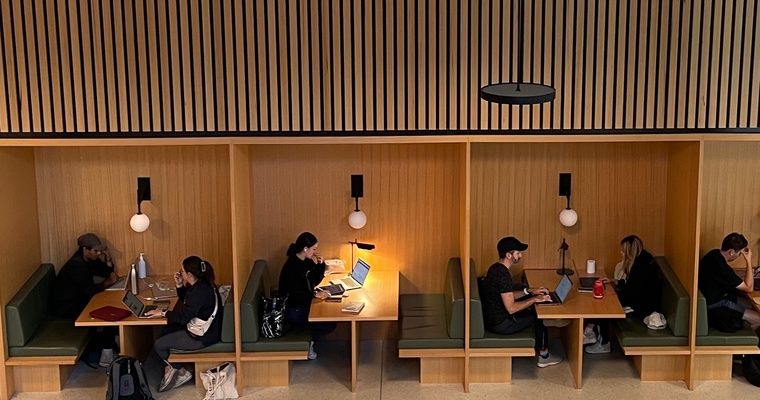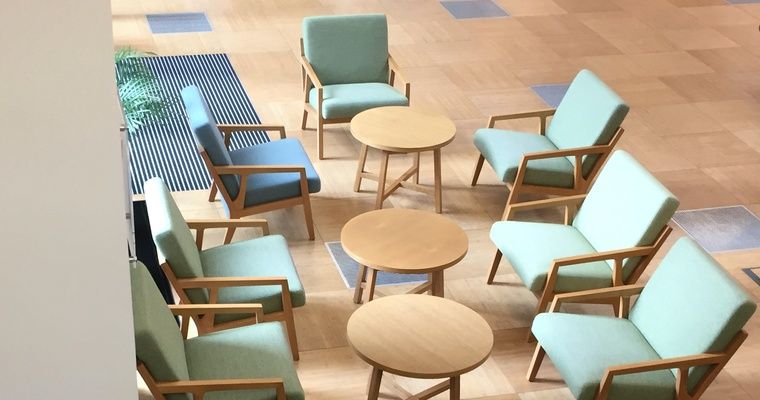Inclusive Toilet Design: Giving Students Choice is the Key
Research
Campus Intuition recently undertook a global review of trends across toilet design to inform an institution’s approach. Here’s what we found.
- Students are becoming more comfortable to disclose their gender, so expectations for appropriate facilities are increasing even if national policy is not keeping pace
Increasingly diverse cohorts require up-to-date, modern infrastructure that supports their needs. In 2017, a report on LGBTQ+ Trans individuals in Britain noted that almost half of trans people did not feel comfortable using public toilets due to fears of verbal abuse, intimidation, and physical assault. The number of students enrolled in UK universities who define their gender as ‘other’ has increased by almost 25% since 2017/18. Students at Sommerville College, University of Oxford recently agreed to the introduction of gender-neutral toilets, in a reversal of a previous vote. Attitudes are changing very quickly, even at the most conservative of institutions, and campus facilities must keep up.
- Naming conventions are not as simple as they look
Gender neutral, all gender, toilets for everyone or no name at all…what should toilets be called? Despite increasing acknowledgement of the rights of the LGBTQI+ community, there is still debate within and beyond that group about terminology for this issue. Consensus may not be possible, but it is important for universities to be aware of the need to consult with intended user groups. ‘All gender’ appears to be the least contested terminology as it is more general than ‘uni-sex’ or ‘gender-neutral’, but some inclusion advocates prefer an entirely gender- free approach, where toilets are simply indicated by a toilet pictogram. Ask the students before rushing to print those signs as it could lead to confusion, especially for institutes with high international student enrolments.
- All-gender designs come in different shapes and sizes
There is no standard all-gender toilet design model, meaning a range of different approaches can be employed. Many are built assuming they look the same as gender-designated designs. However, there are crucial differences that focus on privacy and comfort. The main factor in inclusive toilet design is the decision between a single user stall and a multi-stall approach. The single occupancy stall is a single enclosed unit with a toilet, sink, mirrors, shelves, and menstruation disposal. These toilets are often stand-alone or located in pairs. A multi-stall approach involves individual toilet stalls, notably with floor-to-ceiling doors, and a shared sink area within one larger bathroom, mirroring the typical gender-designated approach. This is a more efficient, but potentially more contentious design approach bringing binary, trans and non-binary genders into the same space. Which leads to our next finding…
- Not everyone loves these toilets, so give people a choice
While many in the LGBTQI+ community appreciate the gains made in recent years in the provision of all-gender amenities, other groups have concerns that should be considered by the university in relation to their specific cultural and faith demographics on campus. The number of Muslim students in education is growing rapidly around the world, as is postgraduate education for international students that have different cultural norms to Western liberal societies. Privacy, comfort and cleanliness pose the most frequent challenges when introducing all-gender toilets, largely for females who either feel unsafe or uncomfortable sharing with male and non-binary students for cultural or religious reasons, or simply through different behavioural and hygiene expectations.
These concerns can be addressed in two ways: through careful design considerations which provide acoustic and visual privacy for the users of shared spaces, and through choice of facilities. While it is virtually impossible to accommodate everyone’s individual preferences, having a choice to use another facility is a tacit acknowledgement that differences exist. As the Centre for Architecture and the Built Environment (UK) so elegantly puts it, “an inclusive environment does not attempt to meet every need, but offers a choice where a single design solution cannot accommodate all users.”
- Accessible toilet design is also expanding to include Changing Places toilets
Increased awareness of inclusive infrastructure design means accounting for those with a range of disabilities. Accessible toilet design should go further than meeting the requirements of students with physical disabilities who rely on wheelchair use. This includes people with neurodiverse conditions who can suffer overstimulation due to toilet design.
Changing Places toilets have advanced facilities such as hoists and adult-sized changing tables and larger cubicles to support ambulant disabled students with handrails and shelves to support individuals who do not require the additional space provided by accessible toilets. There are online maps available for people to find and locate Changing Places toilets. It is essential these are located in areas for visitors as well as staff and students to easily access.
- Consider the location, number and accessibility of toilets
As projects are undertaken to change toilets into all-gender facilities, the location is an important consideration. Initially, universities scattered a few all-gender toilets around the campus. With more students identifying as non-binary, more now need to be within easy reach. Caution should be taken to replacing women’s toilets with all-gender toilets. This approach has backfired in some projects because women then have access to even fewer toilets. Women are often already cueing for facilities (just visit any busy university library) and some groups argue that this transition will erode the fight for potty parity.
Creating single stall accessible bathrooms (all gender and universal access) in high traffic locations can also be problematic as people will flock to these, excluding those who really need them.
Toilets are crucial infrastructure and have the power to exclude individuals who feel their needs are not considered in a building’s design. An inclusive toilet strategy on campus will provide an adequate number of amenities to give all students timely access to an appropriate facility that affords them dignity and privacy. Accepted toilet design is constantly shifting, meaning toilet provision strategies should be regularly evaluated to ensure complete accessibility for all users.
This article is based on research commissioned by a university to address a specific challenge on their campus. If you need help to understand an issue your estate, please get in touch at hello@campusinuition.com



